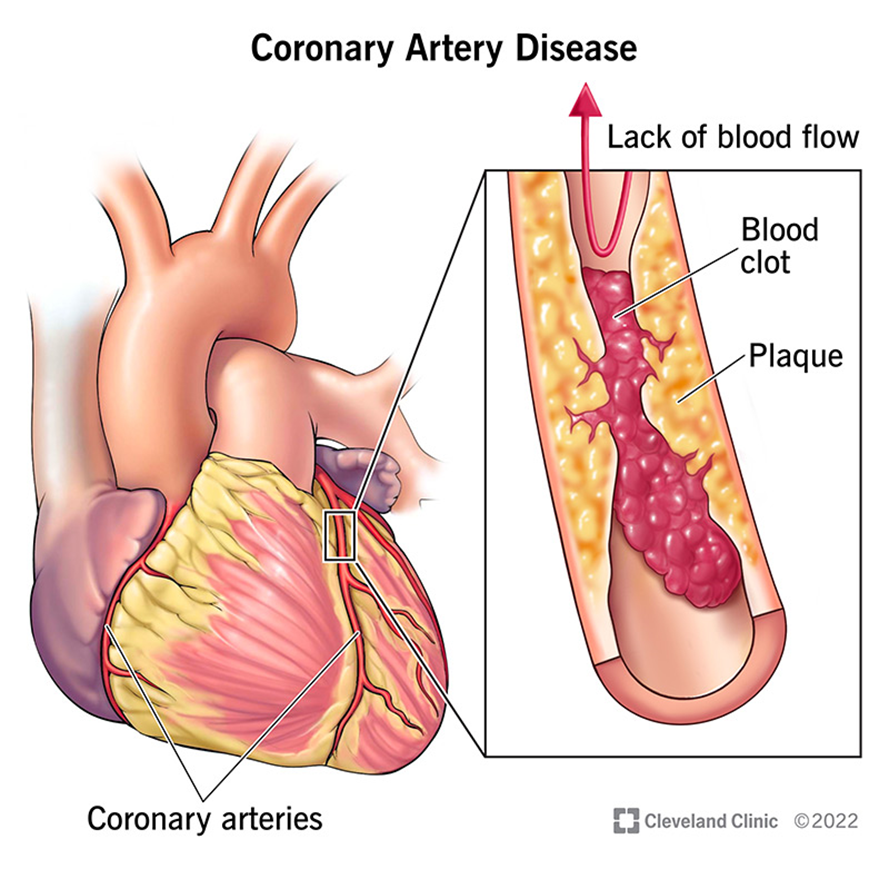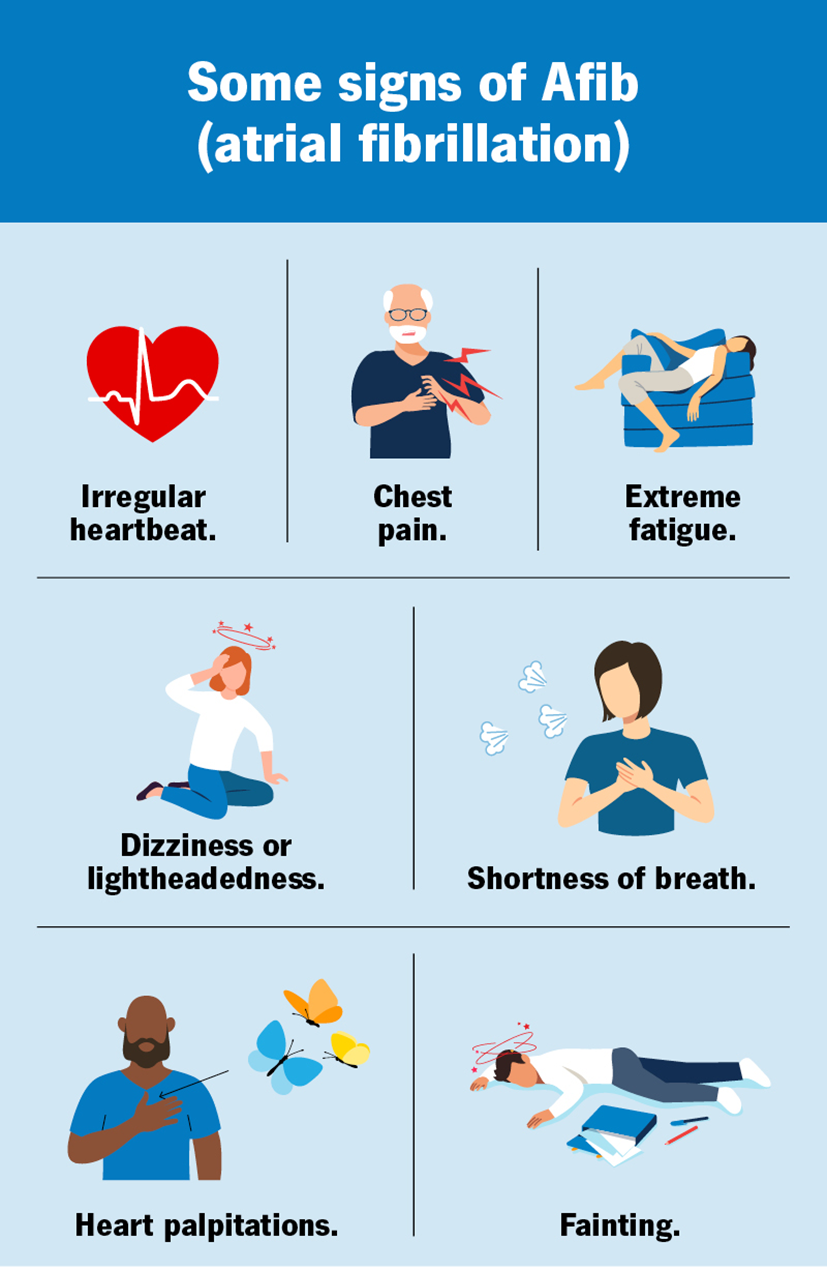Before administering the initial dose of sumatriptan succinate to a client with a migraine headache, it is most important to determine if the client’s history includes which problem?
Irritable bowel syndrome.
Coronary artery disease.
Seasonal allergic rhinitis.
Type 2 diabetes mellitus.
The Correct Answer is B
Choice A reason:
Irritable bowel syndrome (IBS) is not a primary concern when administering sumatriptan succinate. While IBS can cause significant discomfort and affect the quality of life, it does not pose a direct contraindication to the use of sumatriptan. Sumatriptan is primarily metabolized in the liver and excreted by the kidneys, and its use is not significantly impacted by gastrointestinal conditions like IBS1.
Choice B reason:
Coronary artery disease (CAD) is a critical consideration before administering sumatriptan succinate. Sumatriptan is a selective serotonin receptor agonist that causes vasoconstriction of cranial blood vessels to relieve migraine symptoms. However, it can also cause vasoconstriction in coronary arteries, which can be dangerous for clients with CAD. This can lead to serious cardiovascular events such as myocardial infarction or angina. Therefore, it is essential to assess for any history of CAD or other significant cardiovascular conditions before administering this medication.

Choice C reason:
Seasonal allergic rhinitis is not a significant concern when administering sumatriptan succinate. While allergic rhinitis can cause symptoms such as nasal congestion, sneezing, and itching, it does not interact with the pharmacological action of sumatriptan. Therefore, it is not a contraindication for the use of this medication.
Choice D reason:
Type 2 diabetes mellitus is not a primary concern when administering sumatriptan succinate. Although diabetes can increase the risk of cardiovascular disease, the presence of diabetes alone does not contraindicate the use of sumatriptan. However, it is important to consider the overall cardiovascular risk profile of the client, including any complications related to diabetes.
Nursing Test Bank
Naxlex Comprehensive Predictor Exams
Related Questions
Correct Answer is A
Explanation
Choice A Reason:
Contact the healthcare provider: Given the client’s history of anaphylactic reaction to penicillin, there is a potential risk of cross-reactivity with cephalexin, a cephalosporin. Although the risk of cross-reactivity is relatively low, it is still significant enough to warrant caution. Studies indicate that 1-4% of people with a true penicillin allergy may also react to cephalosporins. Therefore, the nurse should contact the healthcare provider to discuss alternative antibiotics or additional precautions.
Choice B Reason:
Give with prescribed antihistamine: While antihistamines can help manage mild allergic reactions, they are not sufficient to prevent or treat anaphylaxis. Anaphylactic reactions require immediate medical intervention, including epinephrine administration. Therefore, relying solely on antihistamines is not an appropriate or safe action in this scenario.
Choice C Reason:
Administer the medication as prescribed: Administering cephalexin without consulting the healthcare provider could put the client at risk of a severe allergic reaction. Given the client’s history of anaphylaxis to penicillin, it is crucial to verify the safety of cephalexin with the healthcare provider before administration.
Choice D Reason:
Monitor the client for a rash or hives: While monitoring for allergic reactions is essential, it should not be the primary action in this case. The priority is to prevent a potential severe allergic reaction by consulting the healthcare provider before administering the medication. Monitoring alone does not address the underlying risk of cross-reactivity.
Correct Answer is D
Explanation
Choice A reason: Giving the next scheduled dose without further assessment is not advisable. An INR of 2.8 is within the therapeutic range for many conditions treated with warfarin, but it is important to ensure that the INR is stable and not trending higher, which could increase the risk of bleeding.
Choice B reason: Obtaining another blood sample might be necessary if there is suspicion of an error or if the INR is unexpectedly high or low. However, in this scenario, the INR is within the therapeutic range, so this action is not immediately necessary.
Choice C reason: Monitoring for signs of bleeding is always important for clients on warfarin, but it does not address the immediate need to communicate with the healthcare provider about the current INR level and any potential adjustments to the medication.
Choice D reason: Notifying the healthcare provider is the most appropriate action. The healthcare provider needs to be aware of the current INR level to make any necessary adjustments to the warfarin dosage and to provide further instructions on monitoring and follow-up.

Whether you are a student looking to ace your exams or a practicing nurse seeking to enhance your expertise , our nursing education contents will empower you with the confidence and competence to make a difference in the lives of patients and become a respected leader in the healthcare field.
Visit Naxlex, invest in your future and unlock endless possibilities with our unparalleled nursing education contents today
Report Wrong Answer on the Current Question
Do you disagree with the answer? If yes, what is your expected answer? Explain.
Kindly be descriptive with the issue you are facing.
